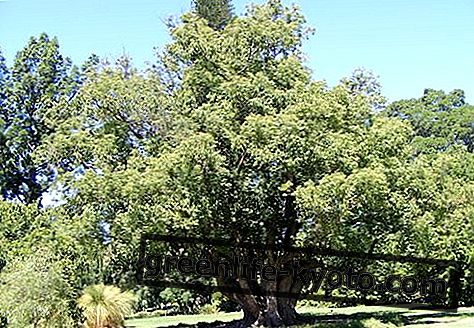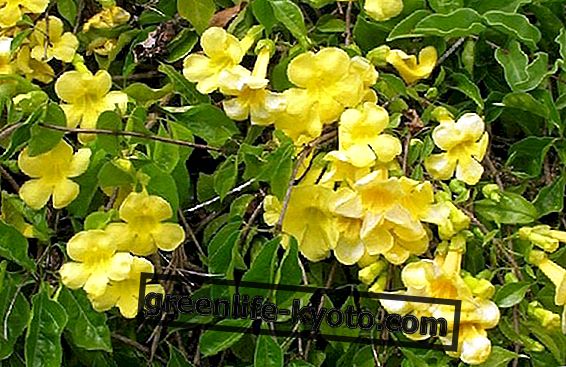
The liver is an organ that performs many important functions for our body, including the metabolism of foreign substances and the production of bile, which is essential for the correct assimilation of fats.
For an organism that works it is essential that the liver works well: we find out which are the most common medicinal plants used for liver health .
The liver and bile ducts: functions and diseases
The liver is an organ that performs very important functions for our body. In the liver, for example, glucose synthesis, bile production, protein metabolism, cholesterol metabolism, fibrinogen synthesis and other coagulation factors, vitamin storage and xenobiotic metabolism, such as drugs and toxic substances.
For an organism that functions properly, therefore, good liver health is essential.
Liver disorders are divided into hepatitis and cirrhosis: hepatitis is an acute or chronic inflammation that can be caused by viruses, drugs or autoimmune diseases; cirrhosis is instead a permanent damage to the hepatic parenchyma, which is also dependent on various causes.
Among the functions of the liver, as we have said, there is the production of bile, a substance formed by bile acids, pigments, lecithin, cholesterol and sodium and potassium salts.
The bile secreted by the liver is stored in the gallbladder and through the biliary tract is poured into the intestine where it plays an important role in the assimilation of lipid substances.
The low influx of bile may be due to reduced production of the bile itself by the liver, in turn caused by liver disease; another cause may be reduced expulsion due to an increase in bile density, a decrease in smooth muscle tone or obstruction of the biliary tract .
The substances defined as cholagogues stimulate the bile flow, while the choleretic ones stimulate the secretion. Colagogues and choleretics can act directly on the liver cells or they can have an indirect action, increasing blood flow or smooth muscle activity or, again, acting on the gastrointestinal tract.
In the case of liver disease it is possible to use hepatoprotective plants including milk thistle, phyllanthus, sofora, picrorriza and soy.
Natural remedies for cholagogues and choleretics are, for example, curcuma, chelidonia, dandelion and artichoke.
Medicinal plants for the liver and biliary tract
Milk thistle is a plant native to the Mediterranean whose fruits contain a complex of flavolignani known as silymarin, as well as proteins, fatty acids, phytosterols and flavonoids.
Silymarin is a mixture attributed to the pharmacological properties of Silybum marianum, which has a regenerating action on liver cells, as well as a detoxifying and anti-inflammatory action.
Preparations containing Cardo mariano do not give any particular side effects but, at high doses, this plant can significantly increase the production of bile and have a laxative effect .
In addition to milk thistle, plants of the genus Phyllantus, used in traditional medicine for the treatment of chronic liver disorders, are used for the welfare of the liver. The aerial parts of these plants contain alkaloids, flavonoids, terpenes, phenols and lignan i.
A review of 22 studies showed that the extracts obtained from these plants can have positive effects in the treatment of chronic hepatitis and no relevant side effects have emerged.
Soy also appears to have hepatoprotective action; the action is due to the phospholipids contained in the seeds of Glycine max have been shown to be able to speed up the regeneration of liver cells following damage caused by alcohol and drugs.
Another natural remedy for the liver is certainly the artichoke, whose extracts have a hepatoprotective, antioxidant, choleretic and cholagogue action. The hepatoprotective action of the artichoke due in part to the chlorogenic acid and the cynarin contained in the leaves while the choleretic and cholagogue properties have been attributed to chlorogenic and neo-chlorogenic acid and sesquiterpene lactones. The artichoke is used for the treatment of liver disorders and dyspepsia.
To increase the production of bile, turmeric extracts can also be taken: the essential oil and curcumin contained in the rhizome seem to increase the production and flow of bile.
Turmeric is traditionally used in the East for the treatment of gastrointestinal, hepatic and biliary tract disorders . Turmeric can be taken in the form of an extract in capsules and has no particular side effects; however, it is not recommended for biliary obstruction and gallstones.
Finally, in case of alteration of the bile flow, we can use the dandelion, a perennial herb very common in the meadows of all Italy. The aerial parts of the dandelion are used to favor the appetite, for the treatment of dispesia, in case of alteration of the flow of bile and to stimulate diuresis.
Dandelion is a safe drug but, like turmeric, it should not be taken in case of obstruction of the biliary tract ; it can also cause allergic reactions in predisposed people.
Read also Nutmeg liver, what it means and how to cure it >>













